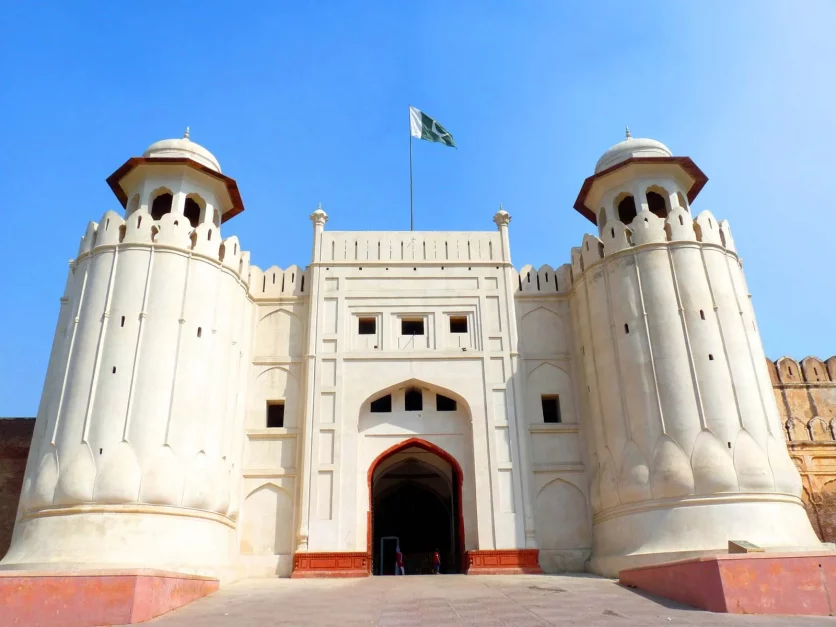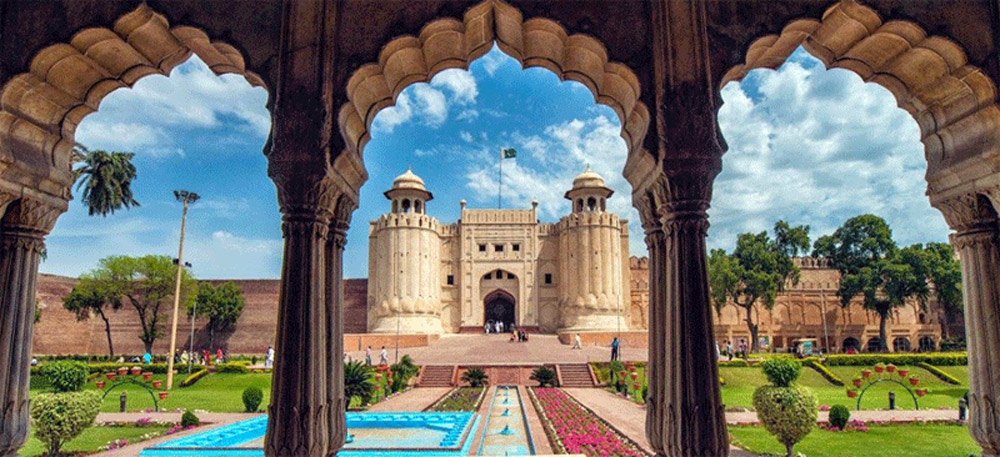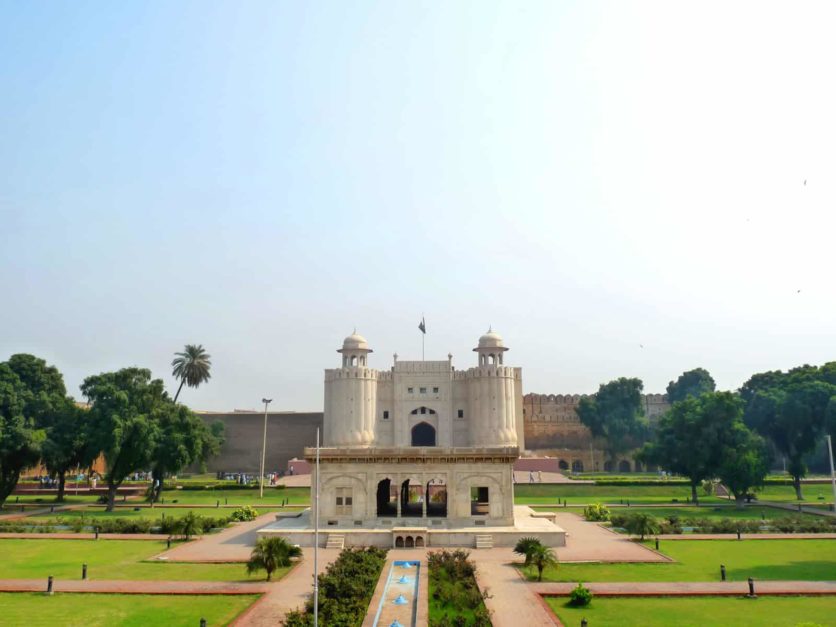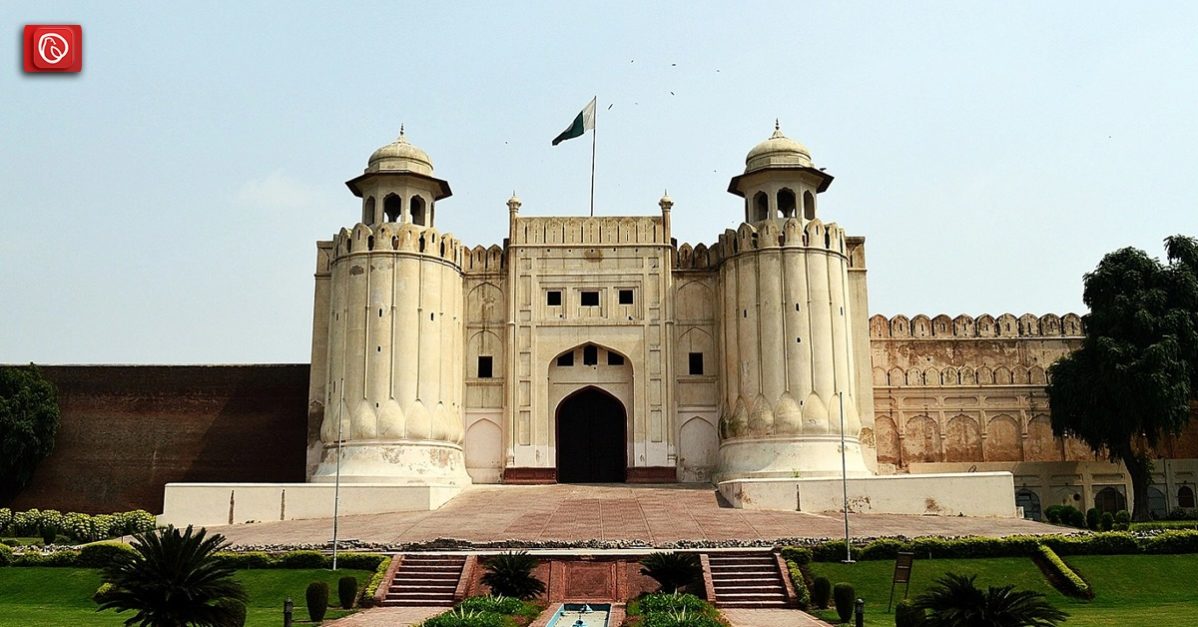Lahore is one of the oldest cities in the world, known for its Mughal architecture and historical sites. One of the most famous historical sites in the city is Shahi Qila, also known as Lahore Fort.
Graana.com has compiled a comprehensive guide to this popular tourist attraction below.
History of Lahore Fort

Lahore Fort is considered to be one of the most famous places to visit in Lahore. Details about who created Lahore Fort is not known with absolute clarity; nevertheless, a study conducted by archaeologists indicated that it was established before the year 1025 AD. The first authentic mention of the fort is found in connection with Muhammad San’s invasion of Lahore in 1180 A.D., and it was rebuilt by Emperor Balban in 1267 A.D.
The present structure was developed by Akbar the Great in 1566 A.D., who reconstructed it with burnt brick masonry instead of mud, and enlarged it as well. His successors – Jahangir, Shah Jahan, and Aurangzeb – also added new design elements to the complex.
During Akbar’s time, the fort was mostly constructed out of red sandstone and a mix of beams and brackets. Jahangir completed the construction work that Akbar had begun, which was later enhanced by Shah Jahan, who was renowned as the royal architect of South Asia at the time.
Location of Lahore Fort
Lahore Fort can be found in the city’s northernmost neighbourhood. A square is formed around the Hazuri Bagh by the Alamgiri gate of the fort, the Badshahi Mosque, the Roshnai Gate, and the Samadhi of Ranjit Singh.
The Alamgiri gate is a component of the ensemble of structures that make up the fort. Iqbal Park and the Minar-e-Pakistan can be found right next to the fort’s northern wall.
The Layout of Lahore Fort
The fort is separated into two distinct sections: the first is the administrative part, which has gardens and the Diwan-e-Khas, which was used for royal audiences. This area is conveniently connected to the fort’s major gates.
The second half is a private residential area that is well hidden from view and is sectioned off into courts towards the north. Elephant Gate provides entry to this area. In addition, there is also the Sheesh Mahal, as well as vast chambers and little gardens. Blue Persian Kashi tiles are used to embellish the outer walls of the building.
The ancient entry is situated such that it looks out upon the Maryam Zamani Mosque, while the bigger Alamgiri gate provides access to Hazuri Bagh via the magnificent Badshahi Mosque.
It has an asymmetrical layout, with roughly 500 yards running east to west, and about 400 yards running north to south. It is surrounded by a fortification wall, with bastions and musketry apertures scattered throughout. The zoomorphic corbels are a typical example of the influence of Hindu architecture.
Gates of Lahore Fort

Lahore Fort has the following gates.
Akbari Gate
Lahore Fort, one of the most famous historical places in Lahore has many gates. Constructed in 1666, this beautiful gate was named after Akbar due to his role in its reconstruction. It can be found on the eastern side of Lahore Fort, facing the Rim Market as well as the Mariam Zamani Masjid, which Jahangir commissioned to be made for his mother.
Historians believe that there also used to be a garden that linked this gate to the mosque on the other side of the street. This gate previously served as the primary entry to Lahore Fort. It is raised off the ground and has an entrance that is large enough for an elephant to pass through.
It consists of two storeys, and each level has chambers that were likely utilised by the troops who were stationed there. The gate features a basement that was once known as Akbari Sarai, which literally translates to “Akbar’s Rest House”.
Alamgiri Gate
Aurangzeb commissioned the construction of the Alamgiri Gate of Lahore Fort in 1673. It is the primary entrance when approaching the fort from the west, facing Badshahi Mosque and Huzoori Bagh. It comprises an impressive entryway that is flanked by two semi-circular bastions. These bastions have fluted shafts and lotus petal bases, and they are capped with domed pavilions.
The massive archway that was built in the centre of the structure was intended to be used by the elephant-drawn caravan that belonged to the emperor. It leads to the central square hall, which features deep recesses with arched ceilings. The passageway via the arches to the south leads into the fort.
It is reported that the gate was demolished during a battle fought between the Sikhs and the British, after which the latter reconstructed it.
Musaman Gate
Musaman Gate was also referred to as Musaman Burj or Samman Burj, both of which translate to “Jasmine Tower”, according to historical texts. When compared to the other gates, this one is located higher than the others. According to historical documents, Shah Jahan constructed it sometime around 1632.
Musaman Gate was formerly considered to be one of the most important entrances to the Lahore Fort; however, due to the passage of time, it was eventually neglected and left in a decrepit state. The stairs that went up to it eventually collapsed and a few of the steps disappeared.
Old maps and references to the Lahore Fort indicate that the Alamgiri Gate, Royal Kitchen, and Musaman Gate were linked to the Shah Burj by a garden. The royal family would enter the fort by this gate and, after passing through the garden, they would be able to access the other areas of the fort, such as the Deewan-e-Aam, the Jahangir Quadrangle, the Shah Jahan Khawabgah and, most notably, the Sheesh Mahal.
Structures at Lahore Fort

Following is the list of some of the most prominent structures at the fort.
Makatib Khana – Fort’s Secretariat
If you are exploring the Walled City of Lahore, you need to see this place. A tiny enclosed court that is directly adjacent to the Moti Masjid can be seen in the Makatib Khana. According to historical accounts, this was the place where clerks kept records of visitors who entered the fort.
Diwan e Aam
This traditional structure is built on an elevated platform that is enclosed on all sides by a stone railing. The Diwan-e-Aam was adorned with velvet canopies, shawls etc. during the reigns of Akbar and Jahangir, and the floor was covered with luxurious carpets.
Even though Shah Jahan’s Diwan-e-Aam in Agra is still standing, the only authentic parts of the one in Lahore are the columns and the footprints. A number of the structures within the building, including the arches and the roof, date back to the British era. There is a section of the Diwan-e-Aam that contains remnants of the original Mughal brick floor.
Temple of Prince Loh
The Temple of Prince Loh, also called the Lava Mandir, can be found inside the Alamgiri Gate of the fort. The majority of historians and academics consider this little room to be the temple of Loh, while others believe that he was born in this room. It is a confined space with low lighting, and is open to the public.
For more informative content, visit the Graana blog.




